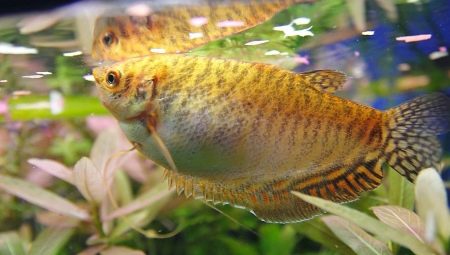Gurami is a bright aquarium fish, which has been popular among aquarists for several decades. IN lately, gold-colored individuals resembling a small sun have especially been fond of. Such a fish can become a living decoration of a home aquarium. Read more about the care and maintenance of golden gourami in the article.
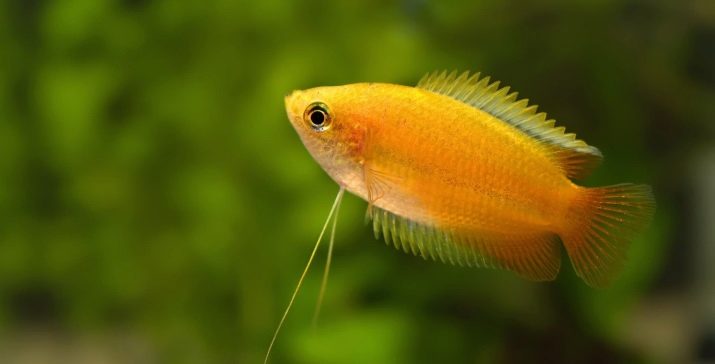
Description and appearance
Golden gourami (lat. Trichopodus Trichopterus var. Gold), oddly enough, not found in the wild. This species is considered fully breeding - It took scientists more than one year to develop it, but the result was obtained in 1970. The aim of the breeders was to achieve a unique color of scales, and they succeeded - they created the first goldfish in history.
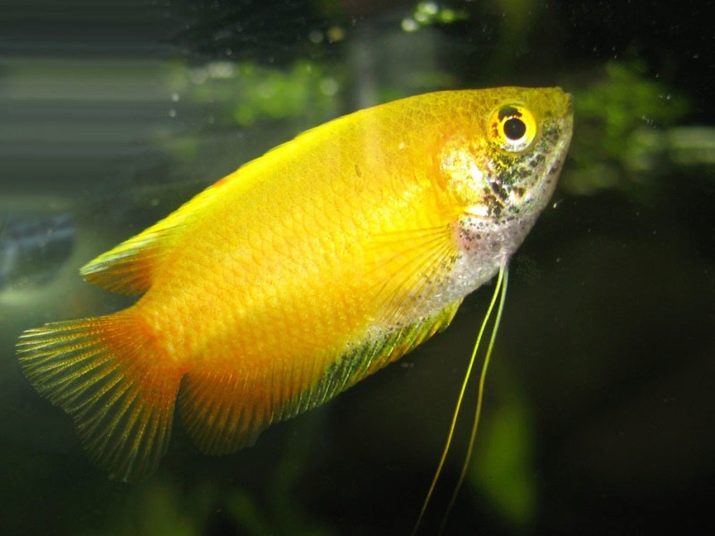
Nevertheless, the ancestors of the gouras can be considered the inhabitants of the marshy, silty reservoirs near the island of Sumatra.
A distinctive feature of gourami, in addition to a dazzling golden color, is the ability to breathe atmospheric air. A similar phenomenon can be observed at the aquarium, when the fish rises to the surface, protrudes its head, swallowing air or water.
The body of the goldfish is elongated, slightly compressed. Standard sizes are approximately 10-12 cm, however, some individuals reach 15 cm in length. On the head are large black eyes. The fins are quite large, rounded.
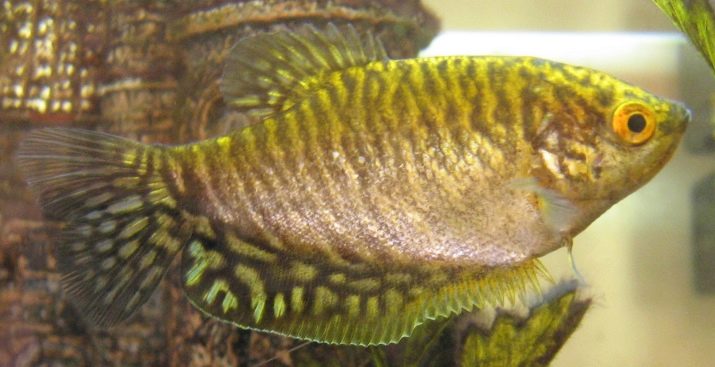
Yellow gourami (females and males) have only seven fins:
- dorsal (located on top, short);
- anal (or tail, long);
- abdominal (is the main, stretches from the abdomen to the tail);
- side (a couple of ordinary);
- thoracic (pair, filiform).
Females from males differ in size and shape of the dorsal fin. So, in males, it is much longer, plus a pointed one at the end. And for females, on the contrary, it is short and rounded. The color of the scales is golden yellow with a slight orange tint. Dark brown marble stains are visible on the sides, and blue spots on the fins. There are also individuals with a tiger color.
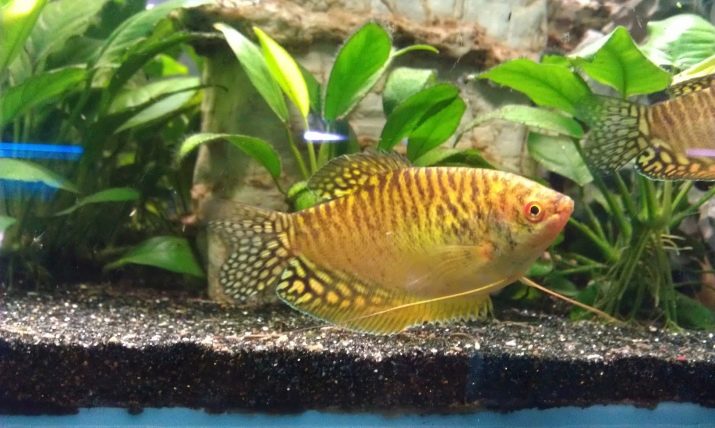
Yellow gourami belong to the family of thread carriers, which is expressed in the ability to transform the ventral fins into long strands called the "mustache". Just with the help of these "whiskers" the gourami explore the world around them, carefully inspecting the plants, interior items in the aquarium, as well as their neighbors.
In the wild, goldfish prefer muddy ponds with poor visibility, where these "whiskers" act as a reference point in space.
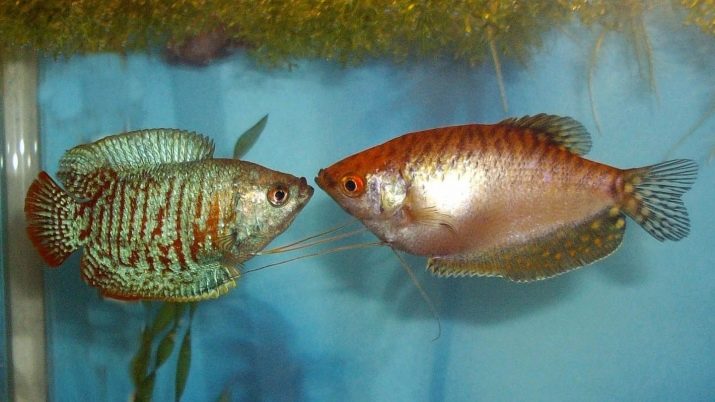
Conditions of detention
The golden look of the gourami, in fact, does not differ from its labyrinth relatives, except for the color of the scales. Therefore, for maintenance and further breeding, the same recommendations should be followed.
At all, gourami are fairly hardy fish. It was this characteristic that made sea creatures one of the most popular among aquarium species. This golden creature is very picky about leaving, which allows even beginners to acquire one or a whole school of fish.
Since the fish lead a daily life, the owners can enjoy them for a long time. In addition, this factor is affected by the fact that Golden gourami prefer to swim in the upper and middle layers of water.
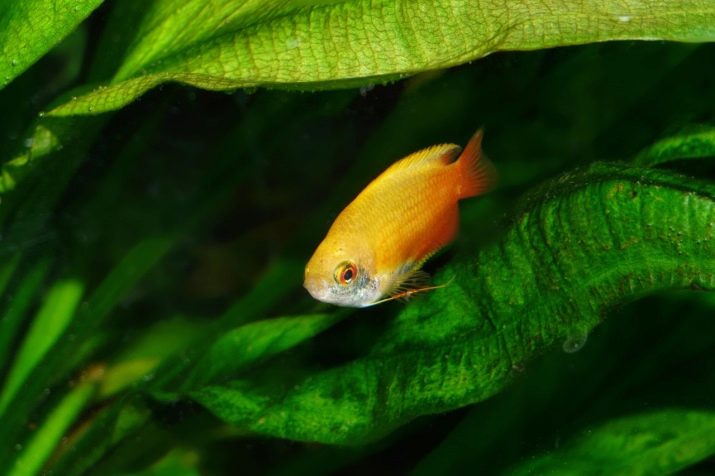
In principle, they can easily adapt to any living conditions, but it is still worthwhile to get acquainted with the main recommendations for aquarists.
Primarily you need to get a quality aquarium with a volume of at least 50 liters, if you are going to start a school of fish - at least 100 liters. According to experts, the larger the water house, the better for its inhabitants.
It is important to take care of good lighting - it should not be bright, it is enough to dim the light a little.
Soil (preferably dark shades) is necessarily laid at the bottom of the vessel, live plants are planted in the form of thickets, as well as floating species. Do not forget about snags - gourami prefer to be near such objects.
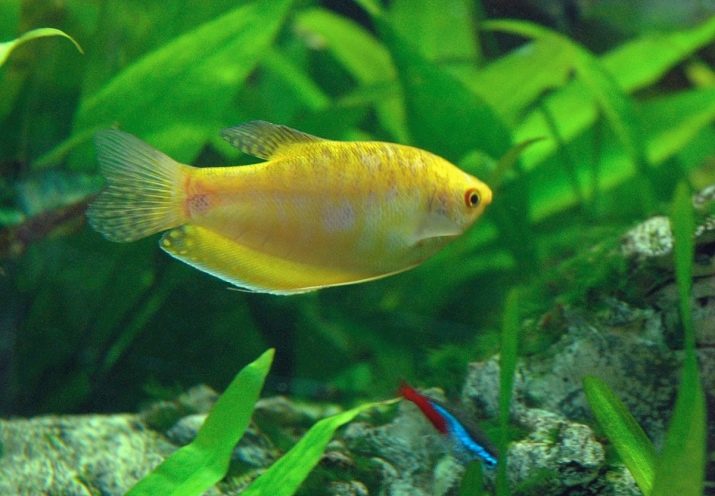
As for water, the ideal temperature for goldfish is +25 degrees Celsius.
Although gourami are hardy creatures that can withstand minor temperature drops, they should not be left for long in cold water - this is fraught with deterioration of well-being. In the spawning period, the water should be slightly warmer - approximately + 28 ... 32 degrees.
Since the yellow gourami constantly rise to the surface to breathe, it is important that the water is warm, otherwise the fish will catch a cold, damaging the labyrinth apparatus. The same applies to the temperature of the water in the aquarium - it should be at room temperature. However, if the room is less than +25 degrees, cover the aquarium with a lid.
An important factor is the hardness of the water.
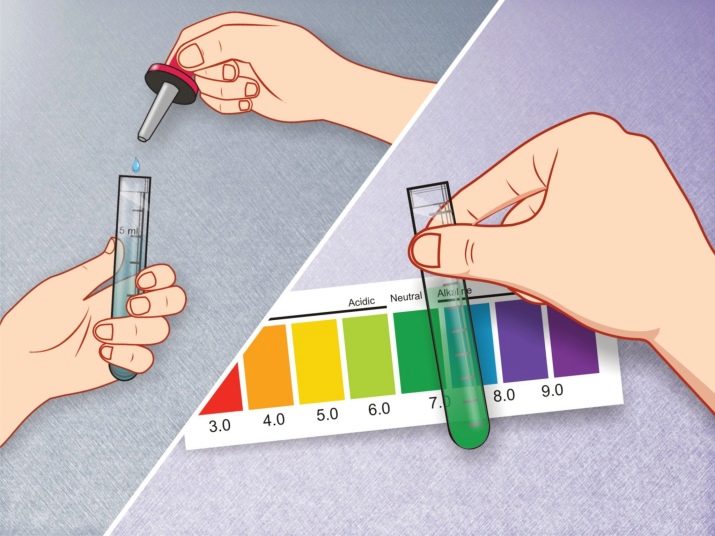
It is necessary to maintain standard indicators - 8-10 units. The same applies to the hydrogen index (pH) - 6.5-7.0.
The conditions of detention also include filtration procedurealso applies here timely aeration. In addition, necessary weekly cleaning and replacing water in the tank - 30% of the total.
Feeding
In terms of food, yellow gourami, like its wild relatives, are absolutely omnivorous. Recommended nutrition is presented in specialized feeds for aquarium fish, which, in turn, are available in three types - live, frozen, artificial dry. Each of these feeds contains the necessary nutrients for the physical health of the small inhabitants of the aquarium.
Experts recommend carefully choose the type of feed, taking into account the physical parameters of the pet. So, the fish have too little mouth, so large meals are not suitable for daily nutrition.
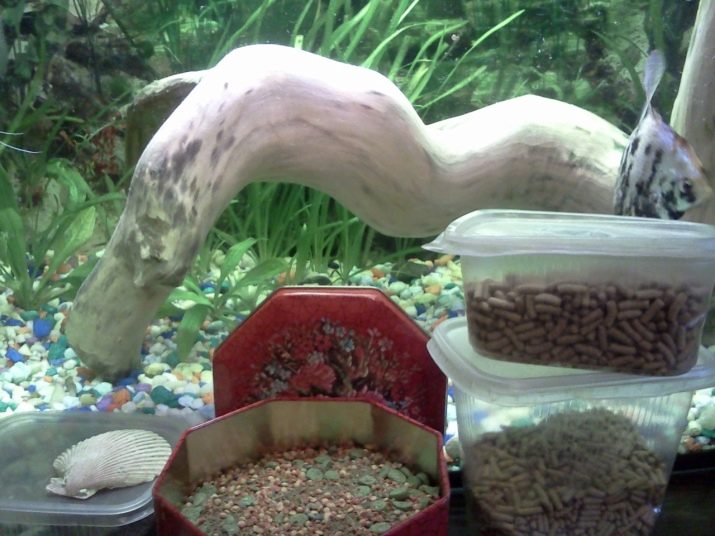
In addition, yellow gourami are prone to overeating, this must be taken into account when building a balanced diet.
Do not feed a goldfish only dry or animal food. It will be better to combine several views to create a daily menu. So, branded flakes or granules can act as a basis, as a top dressing, use small food such as live insects - bloodworms, coronet, tubule, artemia.
In addition to specialized food, aquarium fish eat hydra that fall into the water along with food. Although hydra are pests, in this case they are lifesavers for the health of the fish and the cleanliness of the underwater home.
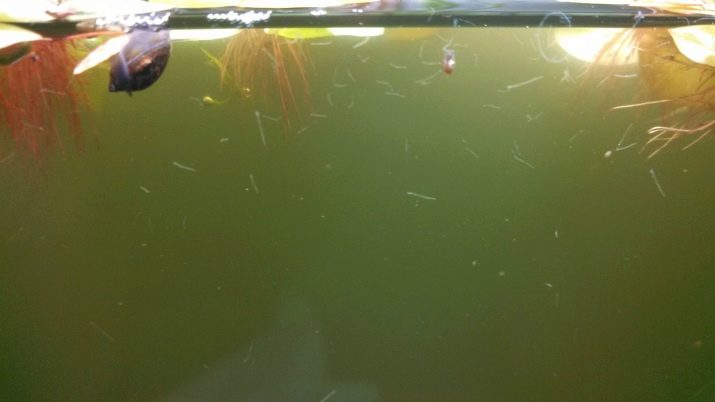
Compatibility with other types
By nature, individuals of this species are very peaceful, unable to express aggression towards their neighbors. On the contrary, shy, cautious fish are gourami. Feeling threatened, they prefer to hide in vegetation or under snags.
In one aquarium, gourami can successfully coexist with virtually their favorite fish species. It doesn’t matter, small or large, you can always be calm about the situation in the underwater house. However, the next fish should be hooked to the gourami with caution. For example, experts do not recommend combining with veil-tails or their relatives.
Despite the peaceful nature, a goldfish can still demonstrate hostility, which, incidentally, is common to all representatives of the labyrinth group.
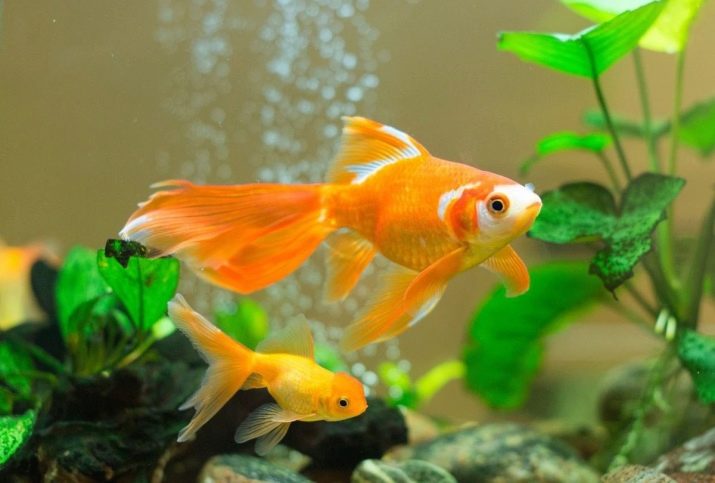
Such aggressive behavior is often found in males, especially during puberty. Therefore, conflicts can occur between males.
Nevertheless, golden gourami - peaceful, harmless creatures. It is extremely rare to meet a truly aggressive individual. Therefore, experts recommend that all lovers of marine life should start a gourami.
Goldfish - a specially bred species of wild gourami, characterized by a bright color of scales. Such a creation will become a real decoration of any aquarium, where golden spots will stand out against the background of blue water and green vegetation. Maintenance and care does not require much effort, the main thing is to determine the nutrition, the aquarium, monitor the temperature, filtering, and also make timely cleaning and changing the water in the tank.
About the content of the golden gourami see below.
